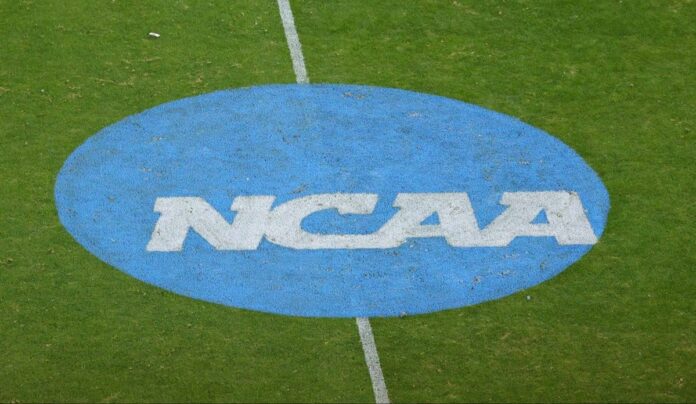NEW ORLEANS — They gathered here, leaders of the two most powerful conferences in college sports, and talked about the future. There was a newfound optimism that they were starting to wrangle all the changes in college athletics to figure things out.
“We’ve got a chance to hopefully build a new model here and get it right,” Ole Miss athletic director Keith Carter said.
And yet they didn’t, by all accounts, talk about the real solution. They didn’t seem to talk about what is the one core problem and the way to solve it. This meeting of the SEC and Big Ten commissioners and athletic directors was conducted a block away from a casino, and the way they’re approaching the future, whether they realize it or not, is a giant gamble.
There is only one serious, overarching issue that negatively impacts everyone, from teams to coaches to fans to even players: unlimited transfers. And there is one sure way to get back to a sensible system: collective bargaining with some entity that represents athletes. It may not have to be a union, per se, and the players may not have to be officially employees. Just some entity that negotiates rules that may not be great for both sides but have enough give and take to benefit the overall sport.
And, more importantly, hold up in court.
GO DEEPER
More SEC-Big Ten matchups could be on the way
Instead, everyone involved is going in the opposite direction. They’re pushing for and hoping for federal legislation that they think will protect them. They’re banking on the coming finalization of the NCAA vs. House settlement, which will bring revenue sharing with athletes but also ways they think they can combat out-of-control payments for name, image and likeness. They’re exchanging ideas on creative ways to discourage players from leveraging the portal every year — sometimes twice a year — whether it with contract clauses or going from two to one transfer windows.
The actual transfer rules, the ability to leave at any time and not sit a season, are no longer a discussion point, having been ravaged by the courts.
“We’re pretty clearly not going to be back to where things were before, and that’s period,” SEC commissioner Greg Sankey said. “We’ve said that. I’ve said that to the coaches. Now that doesn’t mean that that results in a warm embrace.”
So the discussion is about working on the margins, essentially, rather than an overall fix. Or they see that fix — employment and collective bargaining — as a bigger problem than unlimited transferring. That’s misguided.
The ability to leverage the portal for a better deal — at any time — is the core issue from which all other real problems ensue. It hurts the fan experience, not knowing who your favorite team will have year to year. It’s a headache for the coaches. Even for the players, it can stunt development or lead to short-term decisions that have long-term hurt. It’s not good to play for four different teams in four years.
For a brief time, the right rule was in place: players get one free transfer, one chance to go to a new school without having to sit a year. But transfer a second time, and they have to sit. They could have mulligans in the event of coaching changes. All in all a fair rule, better than the old days, but stopping the constant movement that isn’t good for anyone.

GO DEEPER
SEC, Big Ten discussing changes to championship weekend
So what happened? It was struck down by the courts, which said such rules were an unfair restraint on the ability of athletes to capitalize on their NIL rights. The NCAA fought initially but since then has given up. At least on part of that. Now it’s banking on federal legislation and internal options: claw-back clauses in NIL contracts that require athletes to pay back the school they’re leaving. Multi-year NIL contracts. Maybe it will work. Maybe it will settle everything down. But it’s a long-term gamble.
Federal legislation is still subject to court challenges. You can see it playing out already: Congress passes a law that allows the NCAA to make its own eligibility rules and to prevent athletes from being employees. It’s no sure thing, given it will take enough bipartisan support to avoid a Senate filibuster, but let’s say it happens. Even then it may be a temporary victory until a good lawyer challenges the law as a restraint of trade, the same reason courts already have struck down these rules in the first place.
As for the NIL contracts, will players and their agents push more for one-year deals so they retain the annual leverage? We may see the portal movement stabilize for a year or two, but ultimately as long as the unlimited transfer rule exists, the issue will loom. Free movement is what impacts the market the most. Contracts and collective bargaining, give and take between teams and players, are the great stabilizers, as the pros know.
But college leaders are putting it off. Collective bargaining is a last resort. The very idea of athletes as employees is a third rail, what they’re lobbying Congress to legislate against. Maybe it will work, especially in the current political climate. Maybe they will get short-term relief.
More likely, that’s delaying the inevitable. College leaders don’t have a great track record in reading the landscape. They think they’re getting it right this time. Let’s see how that works out.
(Photo: C. Morgan Engel / NCAA Photos via Getty Images)
Source link : http://www.bing.com/news/apiclick.aspx?ref=FexRss&aid=&tid=67b7a4fdd7cf4ce28f10d46611d3c18c&url=https%3A%2F%2Fwww.nytimes.com%2Fathletic%2F6148511%2F2025%2F02%2F20%2Fncaa-college-sports-unlimited-transfers-issue%2F&c=3558241638264106728&mkt=de-de
Author :
Publish date : 2025-02-20 06:17:00
Copyright for syndicated content belongs to the linked Source.














































